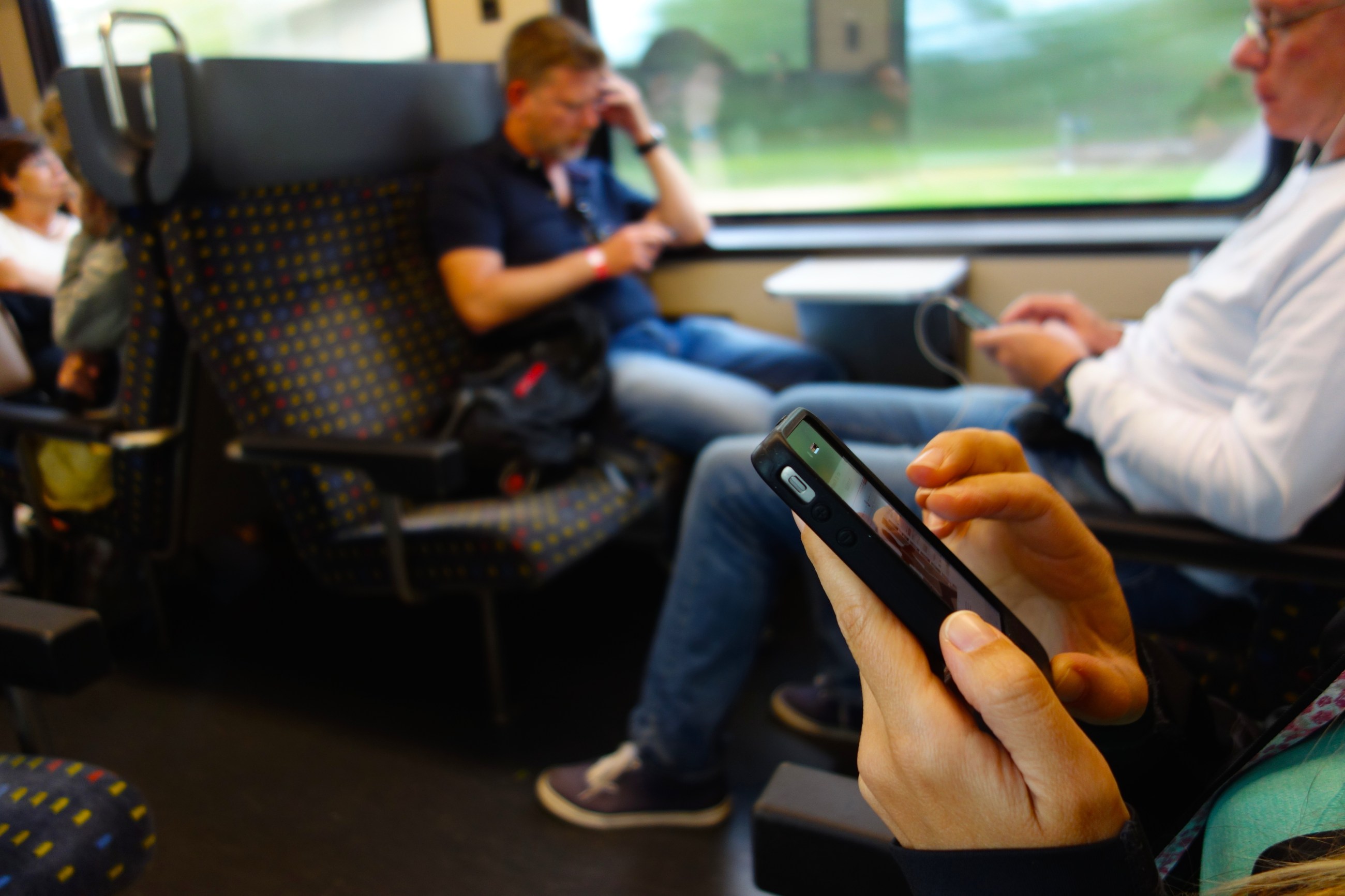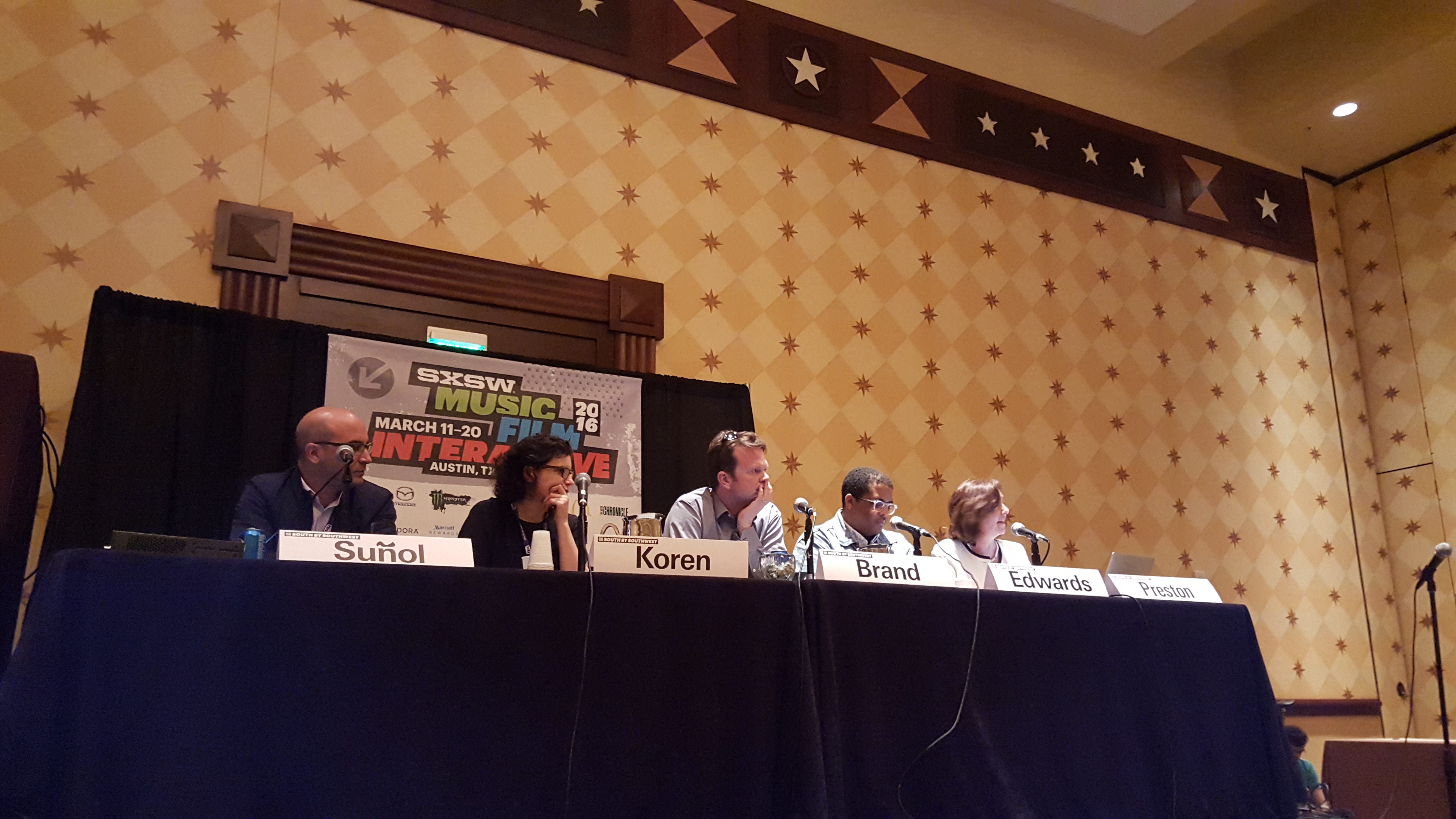
How BuzzFeed, Guardian US, NBCUniversal and NPR are engaging audiences with a mobile-first approach
Photo by Nicolas Nova on Flickr.
Mobile news is a hot topic, with many newsrooms reporting that mobile makes up at least 50 percent of their traffic—and the trend is growing. So it’s no surprise that Knight Foundation’s recent mobile news panel at South by Southwest, “Bringing Stories to Life for the Smaller Screen,” drew a standing-room-only crowd. Knight VP of Journalism Jennifer Preston led a rousing discussion with some of the industry’s best thinkers on mobile-first approaches.
Aaron Edwards of BuzzFeed, Eduardo Suñol of NBCUniversal, Sasha Koren of the Guardian Mobile Innovation Lab and Zach Brand of NPR One shared the different ways their newsrooms are learning about engaging their audiences better with the mobile devices that have become such an important part of our lives. Guardian’s lab and NPR One are both supported by Knight Foundation.
Here are some highlights from the discussion:
Why build apps instead of a great mobile site?
A mobile-responsive website is “the cost of doing business” for a larger audience to reach you directly, said NPR’s Brand, while app experiences tend to be niche, immersive and more expensive to maintain. For BuzzFeed’s Edwards, apps have the advantage of providing a contained environment and are more conducive for experimenting and learning about the audience. That’s harder to do with the mobile Web, he said, which is more “Wild West.”

Panelists Eduardo Sunol, Sasha Koren, Zach Brand, Aaron Edwards and Jennifer Preston at SXSW Interactive.
Intimate storytelling
NBCUniversal’s Suñol said that flashy lights and expensive gear aren’t what matter for mobile storytelling; it’s the story that matters most. He pointed out a successful Facebook Live interview by his team, with an acid attack victim from Colombia. Suñol described how powerful it was to track people watching and asking questions in real time. The strength of the story and the simplicity of the video helped the viewers feel closer to the subject, attracting 502,000 views over eight minutes.
Emojis
BuzzFeed didn’t want their push alerts to be just a marketing tool, but a way to captivate and delight their audience, so they introduced emojis. Edwards believes that even with more serious news stories, emojis can be smart and respectful while reflecting the needs of their audience. Edwards explained that in a recent push when Ben Carson endorsed Donald Trump, BuzzFeed used the side-eye emoji to express skepticism. “We used those to signal that we’re human, not just sending stuff out to waste their time. We want to be fun, useful and interesting.”
Charismatic editors
The Guardian’s Koren and Edwards agreed that their audiences are more comfortable with informal conversations over a slick production on mobile. Both cited experimenting with charismatic editors to host live events, for example how BuzzFeed covered Super Tuesday elections and Guardian’s Whatsapp experiment during a Republican debate last year.
Do people read long stories on mobile?
Edwards said that it is not true that people don’t want to read long stories on small screens. BuzzFeed readers are very engaged with in-depth stories on mobile, especially on the weekends, he said. He added that longer stories used to be a “horrendous” experience for mobile, “but maybe we weren’t making them mobile-friendly in the first place.” This has changed because more newsrooms are paying attention to long-form experiences. Koren said that length is not what we need to worry about for attention, but rather the “day-to-day meat and potato news reports” that need rethinking.
Distributed content
Brand of NPR One talked about how major content platforms such as Facebook and Google are working hard to filter content to be interesting and appealing to individuals, but journalists are uncomfortable with those platforms deciding which news their audience gets. Editors want to represent NPR, he said, to “make sure public media can present itself in its unique way, not just as commodity content… How do we make sure we have a deep meaningful connection and people realize they know they just saw public media on Facebook, and make sure that national and local news is covered?”
Favorite news apps
The panelists’ favorite news apps included New York Times Now, NPR One and BuzzFeed News, along with a few other interesting picks:
- Quartz app reworks news content and adapts it to the language of text messaging.
- Purple is “your personal politics nerd” and informally narrates the election through SMS.
- The link-discovery app Nuzzel curates top stories from your Facebook and Twitter feeds.
The session closed with the understanding that there isn’t a one-size-fits-all model in mobile news and that there are many challenges ahead as newsrooms adapt to “speak in the language of mobile,” Koren said. Innovation isn’t just about building rocket ships, she said, it is also about news organizations being open about their experiments so that the field can learn from successes and mistakes and more quickly forge ahead.
Shazna Nessa is director of journalism at Knight Foundation. Email her via [email protected] and follow her on Twitter @shazna.
Recent Content
-
Journalismarticle ·
-
Journalismarticle ·
-
Journalismarticle ·


